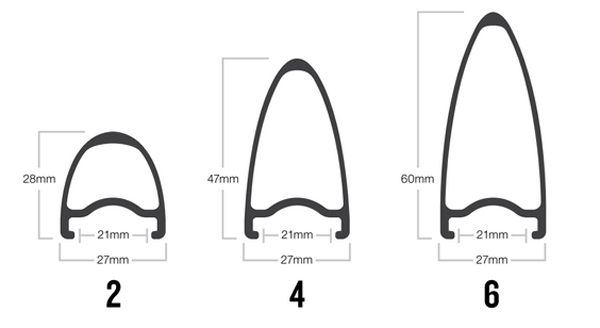hambini wrote:
@MattyK Someone asked this question about crosswind stability on weightweenies so I have copied and my response
To emphasise this here are two popular standard aerofoils that are widely studied. NACA 0012 and 0024.
http://airfoiltools.com/airfoil/details?airfoil=n0012-il
http://airfoiltools.com/airfoil/details?airfoil=naca0024-il
If you look at the Cl vs alpha (graph on the top right), this is how the aerofoil generates lift when used on an aircraft, the alpha denotes attack angle and the CL is lift coefficient. If you change the orientation through 90 degrees and apply it to a bike, it is the force generated by wind when the yaw angle is anything other than zero.
The take away is to note that flow separation occurs around 12 degrees irrespective of the shape of the aerofoil. Having a blunt rim will take you up only to around 15 degrees (Reynolds number of ~100k) but it's a heavy price to pay at low yaw angles. Blunt aerofoils *generally* have poorer reattachment.
And for your other questions
Generally, if you experience a crosswind that is constant, the bike will be totally controllable and you simply tilt your body to compensate. If the wind gusts or pulses then this causes instability. For the average individual, they will be able to control a bike with a 50mm rim set at gusting crosswinds of 40km/h. At 80mm, it will be uncomfortable and may result in a meeting with the deck. Hence the guidance to go for 50mm as a general wheel. It is more important on the front wheel than the rear.
Hope that helps
Hambini
Hambini,
Thanks for sharing your data and thoughts. Any thoughts on the Zipp 454 "hyper foil" design with regards to both aerodynamics and stability? Specialized tested the 454 and seemed to indicate it performed similarly to 50mm "toroidal" rim profile. Do you think there's any validity to Zipps' claims with regards to stability?



